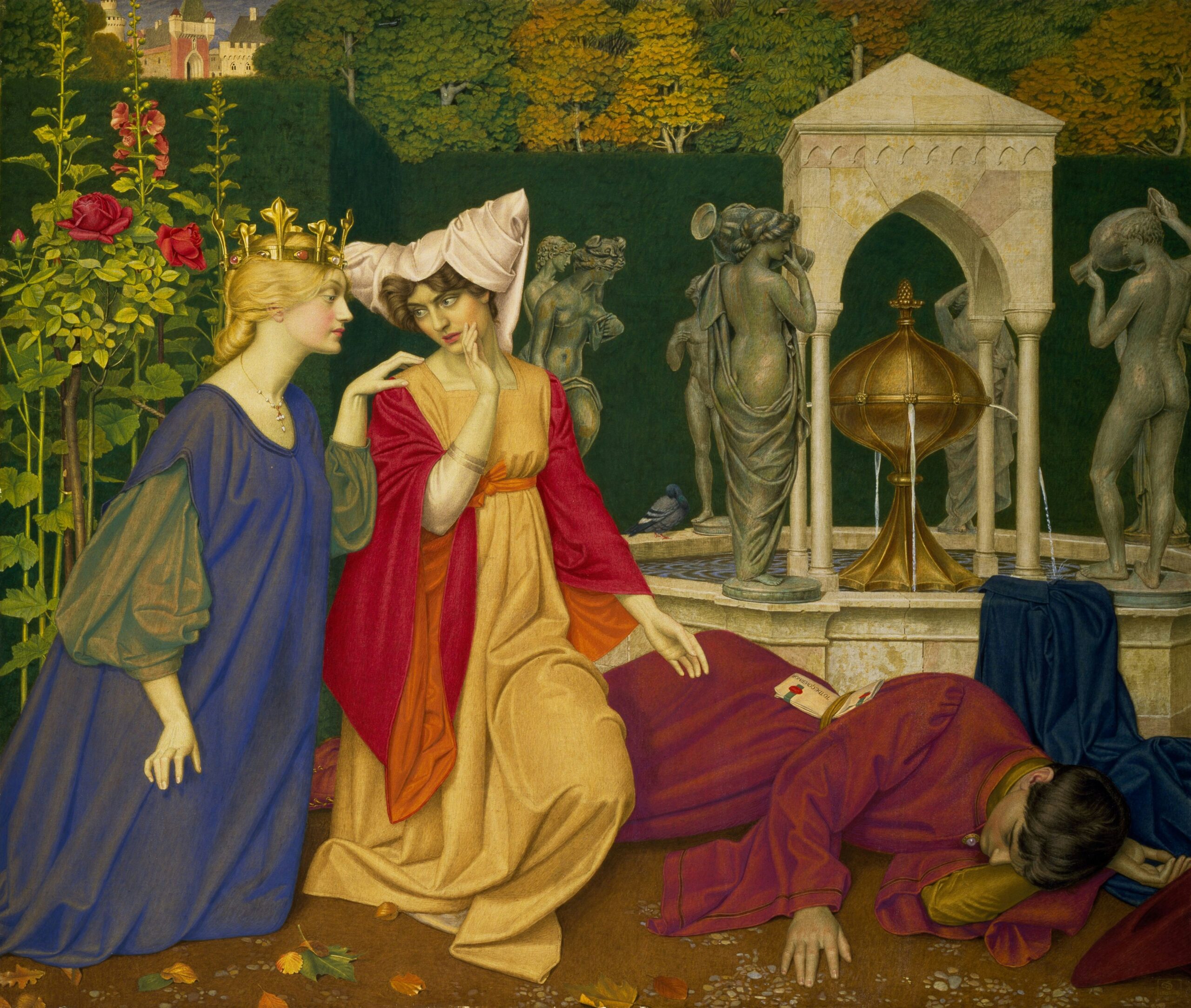
Photo by <a href="https://unsplash.com/@birminghammuseumstrust" rel="nofollow">Birmingham Museums Trust</a> on <a href="https://unsplash.com/?utm_source=hostinger&utm_medium=referral" rel="nofollow">Unsplash</a>
Introduction to Princess Kazer
Princess Kazer emerges from the mists of time, representing a captivating figure entwined in the narrative of a forgotten kingdom. Her origins are shrouded in mystery, forming a rich tapestry of royal lineage that dates back centuries. According to historical texts and folklore, she was born into the esteemed family of the Kingdom of Eldoria, a realm once prosperous and influential but now lost to the annals of history. Kazer was not merely a royal figure; she was the embodiment of the values and traditions that defined her culture, a living representation of honor and grace.
As a member of the royal lineage, Kazer was destined for greatness, inheriting not only titles and privileges but also the heavy burden of expectation. The cultural significance of her story serves as a reminder of the historical complexities often faced by women in power during turbulent times. Her life illustrates the intersection of political intrigue and personal sacrifice, as she navigated the intricate dynamics of court life while striving to maintain the legacy of her ancestors.
The resonance of Princess Kazer’s narrative goes beyond mere historical accounts; it acts as an allegory for resilience. As the kingdom she represented faced decline, her strength and resolve became emblematic of the spirit of Eldoria. Through stories passed down through generations, her actions continue to inspire new interpretations of leadership and the importance of cultural heritage. As we delve deeper into her life and the enigmatic kingdom she hails from, the figure of Princess Kazer will undoubtedly reveal not only the splendor of her time but also the enduring legacy of a culture that once flourished.
The Kingdom of Kazer: A Historical Background
The Kingdom of Kazer, once a vibrant and significant realm, has its roots embedded deep within the annals of history. Established in the early medieval period, Kazer emerged from a confluence of migrations and cultural exchanges, marking the beginning of a prosperous era centered on trade and governance. This kingdom, often overshadowed by its more famous neighbors, played a crucial role in regional politics and served as a hub for commerce and innovation.
Throughout its history, the Kingdom of Kazer witnessed a series of influential events that shaped its identity. The early rulers focused on consolidating power and expanding their territories, establishing fortified cities that became vital for defense against invasions. The strategic location of Kazer allowed it to flourish as a trading post, drawing merchants from distant lands and fostering cultural exchanges that enriched its society and economy. As the kingdom expanded, it developed a unique blend of traditions, languages, and customs, reflecting the diverse backgrounds of its inhabitants.
The apex of Kazer’s historical significance occurred during the reign of a series of enlightened monarchs who championed the arts, science, and philosophy. These rulers implemented progressive policies that encouraged education and infrastructure development, setting the groundwork for Kazer’s societal evolution over the centuries. However, the kingdom also faced challenges, including internal strife and external threats, leading to periods of decline and resurgence.
By examining the history of Kazer, one can uncover the factors that contributed to the narrative starring Princess Kazer. Her life represents not only the grandeur of her lineage but also the trials and tribulations of a kingdom that navigated the complexities of history. Ultimately, the legacy of Kazer continues to resonate, inviting further exploration into its remarkable past.
Life in the Royal Court
Princess Kazer’s upbringing in the royal court was steeped in tradition, privilege, and rigorous expectations. As a member of a long line of rulers, her education began at a tender age, emphasizing not only academic knowledge but also training in the arts of diplomacy, etiquette, and governance. The royal court was a hub of intellectual and cultural activity, where Kazer learned to navigate the complexities of her position with grace and poise. Her education was overseen by esteemed tutors who were well-versed in subjects ranging from history to literature, ensuring that she could engage in meaningful discussions with advisors and dignitaries.
Social dynamics within the royal court were intricate and multifaceted. Princess Kazer was often required to balance her responsibilities as a member of the royal family with the expectations of nobility around her. The court was not merely a place of regal decorum; it was also fraught with intrigue, where alliances were formed, and rivalries emerged. Kazer learned early on that her relationships with key figures were vital for her influence and power. Among her advisors, she found mentors who guided her through the political landscape, while friendships with fellow royals cultivated her social skills.
The bond Kazer shared with her family was both a source of strength and a point of contention. As the daughter of the monarch, she was privy to the inner workings of the kingdom’s governance, and this exposure deepened her understanding of the responsibilities placed upon her shoulders. However, she also faced the challenge of living up to familial expectations, often feeling the weight of legacy. The relationships she fostered, both with her family and her courtly peers, were critical in shaping her character and worldview, ultimately influencing her approach to leadership as she navigated the complexities of her royal life.
Kazer’s Achievements and Contributions
Princess Kazer’s reign was marked by a series of remarkable achievements that significantly shaped her kingdom’s cultural and artistic landscape. One of her most notable contributions was the establishment of the Royal Academy of Arts and Sciences, which played a pivotal role in nurturing talent across various disciplines. This institution not only fostered creativity but also laid the groundwork for advancements in technology and education. Under her patronage, countless artists and scholars were given the resources and encouragement needed to innovate, which enriched the cultural fabric of her realm.
In addition to her focus on the arts, Kazer implemented groundbreaking reforms in governance that improved the lives of her subjects. She instituted a more inclusive approach to decision-making, incorporating the voices of common citizens in the political process. This advancement made her governance more democratic, and her initiatives helped establish a sense of community and belonging among her people. As a result, she was able to effectively address social issues, such as poverty and education, creating a more equitable society for all.
Furthermore, Kazer championed various environmental conservation efforts, recognizing the importance of sustainability in maintaining her kingdom’s natural resources. She advocated for responsible agricultural practices and the preservation of local ecosystems, which contributed to the long-term prosperity of her domain. This visionary approach ensured that future generations would benefit from the natural bounty of their lands.
Kazer’s legacy through her achievements extends beyond her lifetime, as her influence can be seen in the ongoing cultural and political developments in her kingdom. By fostering an environment of creativity, inclusivity, and sustainability, she not only transformed her realm but also set a precedent for future leaders. The effects of her reign resonate to this day, serving as a testament to the profound impact of her contributions to her kingdom and its people.
Challenges and Conflicts Faced by Princess Kazer
Princess Kazer of the forgotten kingdom encountered a myriad of challenges and conflicts throughout her life, which significantly influenced her character and leadership style. From a young age, Kazer dealt with the complexities of royal expectations. As a member of the royal family, she was groomed to take on the responsibilities of leadership, making her acutely aware of both the privileges and burdens of her position. The pressures that came with being a princess often created inner conflicts, stemming from a desire for autonomy and the weight of her duties.
Political turmoil marked much of Kazer’s early life. The kingdom was rife with internal strife among the nobility, who often vied for power and influence. This political landscape brought about significant challenges for Kazer, compelling her to navigate treacherous waters and establish her authority amidst dissent. As factions within the court engaged in power struggles, Kazer found herself at the center of conflicts that tested her diplomatic skills. Rather than adopting an adversarial approach, she developed a leadership style rooted in negotiation and empathy, recognizing the importance of unity in healing her fractured kingdom.
Additionally, Kazer faced societal challenges, as her citizens suffered from poverty and marginalization. The disparity between the royal court and the common people became a focal point of contention. Kazer’s formative experiences in witnessing the hardships of her subjects forged her commitment to social reform. This dedication to addressing the plight of her people not only enhanced her leadership style but also solidified her reputation as a compassionate ruler. The conflicts and challenges faced by Princess Kazer were not merely obstacles; they were instrumental in shaping her identity, instilling in her a resilience that redefined her approach to leadership and governance.
The Legend of Princess Kazer
The tale of Princess Kazer has been passed down through generations, cloaked in mystique and awe. As the daughter of a long-forgotten kingdom, her story is woven into the very fabric of regional folklore. Legends proclaim her as a figure of unparalleled bravery and wisdom, qualities that have elevated her status to that of an enduring symbol of hope, particularly in times of strife.
One prevalent legend recounts a time when her kingdom was beset by an overwhelming enemy. As panic spread among her people, Princess Kazer emerged as a beacon of strength. Rather than retreating into the palace for safety, she rallied her troops and devised a daring plan to outsmart their adversaries. It is said that her bravery inspired even the most timid warriors to join her cause, ultimately leading to a masterful victory that secured a fragile peace for her kingdom. This tale serves as a potent reminder of courage in the face of adversity, encapsulating her legendary status.
Other stories highlight her intelligence and wisdom, suggesting that Kazer possessed an innate understanding of the world. It was believed that she could interpret the whispers of the wind and the movement of the stars. These qualities allowed her to navigate political turbulence and maintain alliances with neighboring realms. Furthermore, tales of her magical abilities emerged, claiming she could heal the sick and summon rain during droughts, thereby solidifying her image as a benevolent ruler who cared deeply for her people.
In every narrative, Princess Kazer transcends the limitations of her time, becoming a timeless icon of resilience and compassion. The blend of bravery, wisdom, and supernatural elements in her legends has contributed to her enduring legacy. These stories resonate with the human experience—embodying ideals that inspire generations to seek courage, wisdom, and agency in their own lives.
Cultural Representations of Princess Kazer
Princess Kazer has emerged as a multifaceted figure within various cultural narratives, embodying themes that resonate across art, literature, and popular culture. Her story, originating from a lesser-known kingdom, has been depicted through numerous lenses, giving birth to diverse interpretations that reflect the values and ideologies of different eras. In literature, Kazer is often portrayed as a symbol of resilience and strength, navigating challenges that highlight her indomitable spirit. Many authors have chosen to weave her tale into contemporary settings, thereby allowing readers to draw parallels between her struggles and the societal issues they face today.
In the realm of visual arts, artists have celebrated Princess Kazer through paintings and sculptures that capture her grace and complexity. These artistic representations often depict her in contrast to her environment, emphasizing her status and the weight of her responsibilities. The use of vivid colors and intricate details not only showcases her beauty but also invites spectators to explore the deeper narratives surrounding her existence. These artistic renditions serve as a reflection of the cultural values during the period they were created, bridging historical contexts with modern interpretations.
Moreover, Kazer’s influence extends into popular culture, where she is frequently reimagined in films, television series, and music. These adaptations, while diverging from the original narratives, often retain core elements of her character, underscoring themes of empowerment and self-discovery. The continued fascination with Princess Kazer highlights her role as a cultural icon, embodying the ideals of courage and agency. As various creators reinterpret her story, they contribute to a broader dialogue about identity and heritage, ensuring that the legacy of Princess Kazer perseveres through generations and remains relevant in our collective consciousness.
The Modern Legacy of Princess Kazer
Princess Kazer, a figure shrouded in myth and mystery, resonates profoundly in contemporary culture and societal ideals. Her legacy serves as a testament to the enduring influence of strong leadership, compassion, and resilience. As we traverse the complexities of the modern world, her story becomes increasingly relevant to the social movements vying for change, empowerment, and justice. The ideals that Princess Kazer represented—courage in the face of adversity, dedication to the welfare of her people, and a commitment to preserving cultural heritage—are echoed in various contemporary endeavors.
Across the globe, activists draw inspiration from her narrative, often paralleling her struggles with their quests for equality and human rights. For instance, women’s rights advocates emphasize her role as a leader during tumultuous times, leveraging her story to galvanize support for gender equity. Organizations that promote social justice celebrate her commitment to community-building, which aligns with their mission of fostering inclusive societies. Moreover, her emphasis on education as a means of empowerment still sparks dialogue among educators and policymakers who endeavor to provide equitable access to learning for all individuals.
The arts have also embraced her legacy, with numerous literary and cinematic adaptations reinterpreting her life story for a modern audience. These creative works highlight the timelessness of her experiences and values, enabling new generations to connect with her journey. Furthermore, the preservation of cultural narratives surrounding Princess Kazer emphasizes the importance of history in shaping contemporary identities. This narrative preservation serves as a reminder that understanding our past can empower us to challenge the present and envision a better future.
As we reflect on Princess Kazer’s enduring influence, it is evident that her values continue to inspire movements and individuals across various spheres. The legacy of this enigmatic princess serves not only as a beacon of hope but also as a catalyst for positive change in today’s world.
Conclusion: The Enduring Mystery of Princess Kazer
As we delve into the intriguing narrative of Princess Kazer, we encounter a tapestry woven with threads of history, legend, and cultural significance. Her story embodies the essence of a bygone era, drawing us into the depths of a forgotten kingdom that once thrived. The enigma surrounding her life and legacy invites scholars and enthusiasts alike to reflect on the complexities of her character, the political landscape of her time, and the enduring themes of resilience and mystery that resonate through the ages.
Throughout this exploration, we have touched upon various facets of Princess Kazer’s life, including her role as a leader, the challenges she faced, and the impact of her decisions on her kingdom. Each element contributes to the larger narrative of a woman caught in the crossfire of duty and desire, whose choices have left an indelible mark on history. The reverberations of her experiences serve not only as a reminder of the past but also as a source of inspiration for contemporary audiences.
Moreover, the untold stories and unanswered questions that linger in the air—such as her ultimate fate and the reasons for her kingdom’s decline—continue to fuel speculation and interest. These mysteries ensure that Princess Kazer remains a captivating figure, prompting readers to engage with her story in multiple dimensions. As we ponder the lessons embedded in her saga, we are reminded of the importance of understanding historical narratives and the lives of those often relegated to the margins of history.
In conclusion, Princess Kazer exemplifies the rich narratives that histories often conceal, serving as a multifaceted symbol of strength, intrigue, and uncharted destinies. Her legacy invites us to explore the broader themes of power, identity, and the passage of time, making her an enduring figure in the annals of legend and a source of reflection for generations to come.




